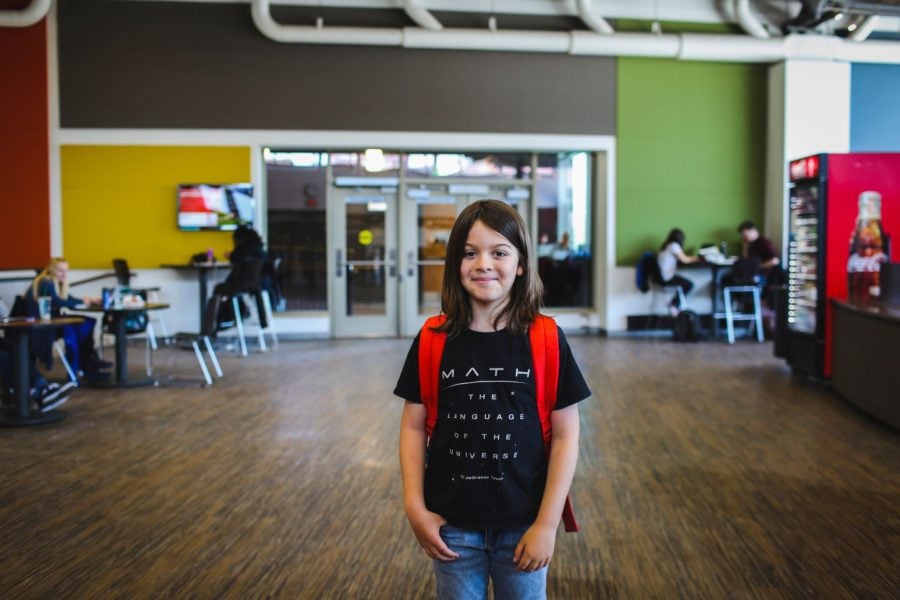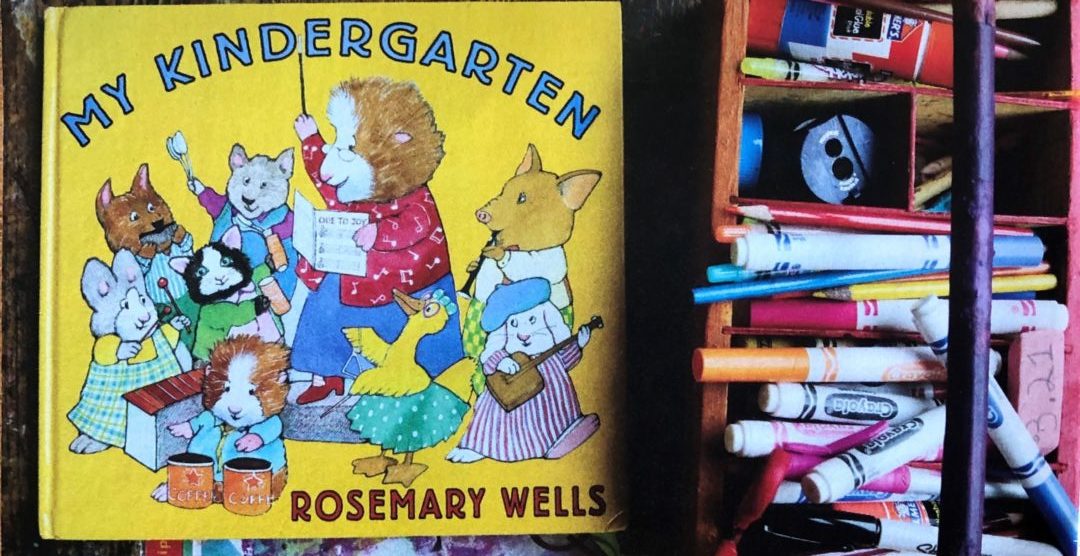A Twin Cities charter school with an agriculture emphasis offers a K–12 curriculum with two suburban campuses.
Do you know where your salad comes from? Or what’s in the pesticide you’re about to spray on your lawn? Or how to tell whether that weird thing your dog is doing requires a trip to the vet?
These are only a few of the questions students might investigate at the Academy for Sciences and Agriculture (AFSA) — a public K–12 charter school with a longtime campus in Vadnais Heights and a new K–8 location in Little Canada.

In addition to a familiar curriculum that includes English, math and social studies, students at AFSA learn the fundamentals of agriculture, an industry growing by nearly 60,000 jobs per year, according to the USDA.
Along with reciting Macbeth or rehearsing the school musical, students might study plastic alternatives made from milk proteins or chemical-free food preservation techniques.
They also grow 75% of the lettuce used in the lunch program as well as thousands of plants for the annual Mother’s Day plant sale. (Last year, sales totaled nearly $10,000.)
AFSA — founded in 2001 to offer agriculture education in the city — is one of a handful of ag-focused schools in major metro areas around the country.
With food and ag giants like Cargill and Land O’ Lakes headquartered in Minnesota, not to mention the University of Minnesota’s well-respected agriculture programs, it’s no wonder the AFSA has seen interest in its program rise year after year.
Connecting the dots
When Isabella Forliti, a 2019 graduate, first arrived at AFSA in seventh grade, she didn’t know much about agriculture.
“It’s not a word I heard much, to be honest,” she said.
Though she was initially attracted to the school’s special offerings, including welding classes and an on-site greenhouse, she said her biggest takeaway has been the agricultural education she’s received.
“We get stereotyped a lot as ‘the farming school’” she said, “We look at it from a different perspective. We’re doing agriculture in the city.”
Although students do spend some time visiting and working on farms throughout the year, the school’s curriculum is focused on five core areas of science and agriculture — animal science, plant science, environmental science, food science and mechanical science and engineering.
Students also get real-world experience through career days, college visits and nearly 100 field trips per year in which they might learn firsthand what it’s like to be a veterinarian, plant biologist, food chemist, welder or even animal nutritionist.
These STEM-focused opportunities are available in part because the school owns and operates its own buses, rather than contracting out to an external company.
Becky Meyer, the executive director of the school, said owning buses gives the school more flexibility to get students off campus and out into the real world to show them what’s possible, so they can make more informed choices about their lives after school.
“A lot of students would not know about the jobs that are in agriculture if they weren’t here,” she said, “You can’t go into a career area if you don’t know it exists.”
As Forliti begins the next chapter of her life at the University of Wisconsin, River Falls, she said AFSA has inspired her to pursue a career in communications and journalism with an emphasis in agriculture.
“Agriculture is everything.” she said. “It’s what you wear, it’s what you eat. You can’t escape it. It’s important to me to spread the word, to make people aware of how important that farm-to-table connection is.”
Seeking smaller classes
A lot of families are attracted to AFSA not necessarily because of the agricultural component, but because of its small class sizes and experiential learning opportunities.
With an average high school class size of 19 and elementary and middle school class sizes of 24, students can find a lot of opportunity for individual attention.
For parents Tim and Dana Harstad, that was a big draw. They moved their two children, Kara (grade 11) and Alex (grade 8) to the school three years ago and say both kids have thrived in the supportive atmosphere.
The agriculture curriculum was a bonus and has only strengthened their natural interests.
Kara, an avid animal lover, now plans to become a large-animal veterinarian, while Alex has developed an even greater love for gardening since coming to the school, and he now maintains his own greenhouse at home.

Fostering community
One thing that keeps families at AFSA is the sense of belonging the school works to instill in its broader community.
Extracurricular activities include dance, drama, art, youth in government, athletics, robotics, quiz bowl, birding and much more, so the school can provide plenty of opportunities for students to find their own place, no matter where their interests lie.
All students at the school also become members of the National FFA Organization, formerly known as Future Farmers of America or FFA.
Through the FFA, which is geared toward kids interested in agriculture, students can participate in competitions, science fairs and social activities as well as develop leadership skills and cultivate relationships with other FFA members around the country.
Meyer said many students benefit in even bigger ways.
“I’ve seen numerous quite-shy kids go on to become officers or even president, which means they talk in front of people a lot,” she said. “We really work on those real-world experiences to help them.”
The supportive atmosphere at AFSA extends into the parent community. The Harstads have been especially impressed with parent engagement at the school.
“We’ve never been involved at a school until we moved to AFSA,” Dana Harstad said. “We want to support all the kids here, not just our kids.”
Tim Harstad said: “It encourages us, as parents, to be that much more involved when we see the enthusiasm of the faculty. Being involved is what makes things happen.”
Twice a year the students at AFSA volunteer in the school’s surrounding communities with service days at city parks, pumpkin patches, urban farms, horse ranches, homes for veterans and more. Students complete tasks such as weeding, planting and fall/spring cleanup work.
Another example of community-building is the school’s annual Potato Hog event, in which parents make and sell baked potatoes while students sell items they’ve made for their required SAE (Supervised Agricultural Experience). Funds from the baked potato bar cover the cost of the next year’s event while students gain entrepreneurial skills and even profits from their sales of handmade jewelry and woodworking creations as well as food items such as freshly baked bread and honey.
“They have to price it and market it and keep records and sell it as if they are a vendor anywhere else,” Meyer said.
It’s those kinds of opportunities, connections and community-building activities that inspire families from more than 27 school districts, some more than 40 miles away, to attend the school.
The Harstads, who moved out to Circle Pines just last year, didn’t want to give up the school community they had come to love.
Fortunately, the school accommodated their move by adding a bus stop closer to their house — and the kids are happy to make the hour-long trek every day.

Expanding into K–4
AFSA began as a 9–12 school and added middle school in 2011, all on the same campus at Vadnais Heights. As interest in the school grew, the school developed plans to add an elementary program.
In September, AFSA opened its doors to students in kindergarten through fourth grade in a new building in Little Canada.
This new location now houses the K–8 program, just five minutes south of the original school, while the Vadnais Heights location has returned to its roots as a high school.
AFSA’s elementary program will use an inquiry-based approach in addition to real-world experiences much like the middle and high schools, while the play-based kindergarten will emphasize social-emotional development and hands-on learning.
Agricultural studies will be integrated into the daily curriculum along with science, cultural studies, math and reading.
While about 30% of AFSA students do go on to pursue ag-related post-secondary education (an impressive number when most students begin with little to no background in agriculture), the bigger goal is to inspire students to be ag-literate thinkers and educated consumers, Meyer said.
“Everyone depends on agriculture at some basic level,” Meyer said.
That certainly is true, and as global population growth and climate change put increasing pressure on our world’s natural resources, it will undoubtedly become more important to equip the students of today with the skills and passion necessary to solve the agricultural challenges of tomorrow.
Learn more
The Academy for Sciences and Agriculture campuses are at 2925 Country Drive, Little Canada (K–8) and 100 Vadnais Blvd., Vadnais Heights (grades 9–12, above). To apply for a place at the schools, go to afsahighschool.com. If you would like to set up a tour or shadow day, contact Liz Burkwald at 612-260-2665 or [email protected]. AFSA summer programming includes N.E.R.D. Camp, which is open to all Minnesota residents in grades K–8 and includes hands-on experiences in a variety of STEM fields with morning, afternoon and full-day options. Contact Stephanie Forliti at 651-209-3910 or [email protected] for more details.
Amanda Webster lives in Roseville with her husband and two kids.























